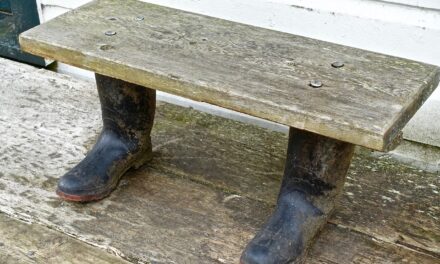Maine, known for its incredibly picturesque landscapes and truly rugged coastline, has a rich and varied history.
From its early indigenous inhabitants and European exploration to its role in the American Revolution and subsequent growth, Maine has played a unique role in the history of the United States.
Below, we explore Maine’s fascinating history, covering its foundation, key historical events, and notable landmarks.
Table of Contents
Early History
Indigenous Inhabitants and European Exploration
Before European settlers arrived, Maine was home to various Native American tribes, including the Wabanaki Confederacy, which comprises the Penobscot, Passamaquoddy, Maliseet, and Mi’kmaq nations.
- These tribes had established societies with rich cultures, agriculture, and trade networks.
- Europeans first explored the area in the early 16th century, with notable explorers such as Giovanni da Verrazzano and Samuel de Champlain charting the coast.
The indigenous peoples and early European explorers laid the groundwork for future settlements.
Colonial Period
Maine’s colonial history began in the early 17th century with the establishment of several settlements.
- The Popham Colony, established in 1607, was one of the earliest English settlements, though short-lived.
- Permanent settlements began to take hold in the 1620s and 1630s, with communities such as York and Kittery.
The colony’s early economy was based on fishing, lumber, and trade.
Territorial Disputes and Growth
Maine’s territorial boundaries were contested between the English and the French, leading to several conflicts.
- The area was part of the Massachusetts Bay Colony from 1652 until Maine achieved statehood in 1820.
- Despite these challenges, Maine continued to grow, attracting settlers with its abundant natural resources.
By the late 17th century, Maine was a thriving colony with a diverse population and economy.
18th Century and the American Revolution
Pre-Revolutionary Period
Maine played a crucial role in the lead-up to the American Revolution.
- The region was involved in early resistance against British rule, with significant events such as capturing the British armed vessel HMS Margaretta in 1775.
- Maine’s coastal towns were targeted by British forces, leading to the burning of Falmouth (now Portland) in 1775.
Maine’s leaders and citizens were instrumental in the revolutionary cause.
Revolutionary War
During the American Revolution, Maine contributed significantly to the Patriot cause.
- The region provided soldiers, ships, and resources essential for the war effort.
- Although the Penobscot Expedition in 1779 failed to reclaim Castine from the British, it demonstrated Maine’s strategic importance.
Maine’s contributions were crucial to the overall success of the American Revolution.
19th Century Development
Path to Statehood
The early 19th century saw significant political changes in Maine.
- Maine was part of Massachusetts but sought statehood due to its distinct identity and geographical separation.
- The Missouri Compromise of 1820 was what allowed Maine to enter the Union as a free state, balancing Missouri’s admission as a slave state.
Maine achieved statehood on March 15, 1820.
Industrial Growth and Immigration
In the 19th century, they brought industrial growth and immigration to Maine.
- The state’s economy diversified with the development of shipbuilding, fishing, lumber, and textile industries.
- Immigrants from Ireland, Canada, and other parts of Europe contributed to Maine’s cultural and economic landscape.
Maine’s industrial boom attracted a large influx of workers and entrepreneurs.
Social and Political Changes
Maine was an early advocate for social reforms.
- The state played a significant role in the temperance movement and was the first to enact prohibition laws in 1851.
- Maine also supported the abolitionist movement, with notable figures like Hannibal Hamlin advocating for the end of slavery.
These social and political changes laid the groundwork for Maine’s modern identity.
20th Century and Modern Era
Economic Shifts and Cultural Developments
The 20th century it brought economic changes and cultural developments to Maine.
- The decline of traditional and fruitful industries like shipbuilding and textiles led to economic diversification into tourism, healthcare, and technology sectors.
- Maine became known for its educational institutions, including Bowdoin College, Colby College, and the University of Maine.
The state’s cultural institutions, including museums, theaters, and music venues, reflect its rich heritage.
Environmental and Historical Preservation
Efforts to preserve Maine’s natural beauty and historical heritage have been ongoing.
- The state has numerous parks, historical sites, and cultural institutions, such as Acadia National Park and the Maine Maritime Museum.
- Preservation organizations work to protect Maine’s historic buildings and landscapes.
These efforts ensure that Maine’s history remains accessible and appreciated by future generations.
Notable Landmarks
Acadia National Park
Acadia National Park is known as one of the most visited national parks in the United States.
- The park offers stunning landscapes, including mountains, forests, and coastlines.
- It provides numerous recreational opportunities, such as hiking, biking, and wildlife viewing.
Acadia National Park symbolizes Maine’s natural beauty and environmental stewardship.
Portland Head Light
Portland Head Light, located in Cape Elizabeth, is one of the most iconic lighthouses in the United States.
- Commissioned by George Washington and first lit in 1791, it remains an active aid to navigation.
- The adjacent museum offers insights into the history of lighthouses and maritime navigation.
Portland Head Light is a critical landmark in understanding Maine’s maritime history.
The Wadsworth-Longfellow House
Located in Portland, the Wadsworth-Longfellow House was the childhood home of poet Henry Wadsworth Longfellow.
- The house is preserved as a museum and offers tours highlighting Longfellow’s life and works.
- It is one of the oldest brick structures on the Portland peninsula.
The Wadsworth-Longfellow House celebrates the life and legacy of one of America’s greatest poets.
Bowdoin College
Founded in 1794, Bowdoin College in Brunswick is one of the oldest established and most prestigious liberal arts colleges found in the United States.
- Bowdoin has produced numerous notable alums, including Nathaniel Hawthorne and Franklin Pierce.
- The college’s historic campus and significant educational contributions make it a cornerstone of Maine’s identity.
Governance
State Government
Maine operates under a constitution adopted in 1820.
- The state government consists of the Executive, Legislative, and Judicial branches.
- The governor, currently Janet Mills, serves as the head of the executive branch.
The state government works to address the needs of its diverse population and manage its resources effectively.
Local Government
Maine’s local government structure includes counties, municipalities, and special districts.
- Each level of government has specific responsibilities for services such as education, public safety, and infrastructure.
- Local governance ensures that the diverse needs of Maine’s communities are met.
Effective local governance contributes to the overall well-being of the state’s residents.
Demographics and Growth
Population
Maine has a diverse and growing population.
- As of the 2022 census, the population was 1.385 million.
- The state’s demographic makeup reflects its rich history of immigration and cultural diversity.
Diverse demographics and steady growth reflect Maine’s appeal as a place to live and work.
Education and Economy
Maine is home to some of the nation’s top educational institutions, including Bowdoin College and the University of Maine.
- The state’s economy has diversified into healthcare, education, tourism, and technology sectors.
- Maine continues to be a leader in higher education and environmental research.
These factors contribute to the state’s economic resilience and cultural vibrancy.
State of Maine Q&A
Q: When was Maine founded?
A: Maine was founded as a state on March 15, 1820, following the Missouri Compromise, which allowed Maine to enter the Union as a free state. Before statehood, Maine was part of the Massachusetts Bay Colony.
Q: Who were the original inhabitants of Maine?
A: The original inhabitants of Maine were various Native American tribes, including the Wabanaki Confederacy, which comprises the Penobscot, Passamaquoddy, Maliseet, and Mi’kmaq nations. These tribes had established societies with rich cultures, agriculture, and trade networks before the arrival of European settlers.
Q: What role did Maine play in the American Revolution?
A: Maine played a crucial role in the American Revolution, providing soldiers, ships, and resources essential for the Patriot cause. Notable events include the capture of the British vessel HMS Margaretta and the Penobscot Expedition.
Q: How did Maine’s economy evolve in the 19th century?
A: The 19th century saw significant industrial growth in Maine, with the development of shipbuilding, fishing, lumber, and textile industries. These industries transformed the state’s economy and attracted many immigrants.
Q: What significant changes occurred in Maine post-World War II?
A: Post-World War II, Maine saw economic shifts with the decline of traditional industries that were successful for a long time like shipbuilding and textiles, leading to diversification into sectors such as healthcare, education, tourism, and technology. The state also became known for its educational institutions and environmental research.
Q: What are some notable historical landmarks in Maine?
A: Notable landmarks include Acadia National Park, Portland Head Light, the Wadsworth-Longfellow House, Bowdoin College, the Maine Maritime Museum, Fort Knox and Penobscot Narrows Observatory, and Old Orchard Beach. These sites highlight the state’s historical and cultural significance.
Q: How is Maine governed?
A: Maine operates under a constitution adopted in 1820, with an Executive, Legislative, and Judicial branch. The governor serves the people as the head of the executive branch, and counties, municipalities, and special districts manage local governance.
Q: What is the current population of Maine?
A: As of the 2022 census, Maine’s population was 1.385 million. The state continues to attract residents with its diverse culture, educational opportunities, and economic resilience.
Maine’s dynamic history and commitment to preserving its natural and cultural heritage make it a unique and vibrant state.
By maintaining its historical landmarks and fostering growth in new industries, Maine continues to honor its past while looking forward to a prosperous future.





